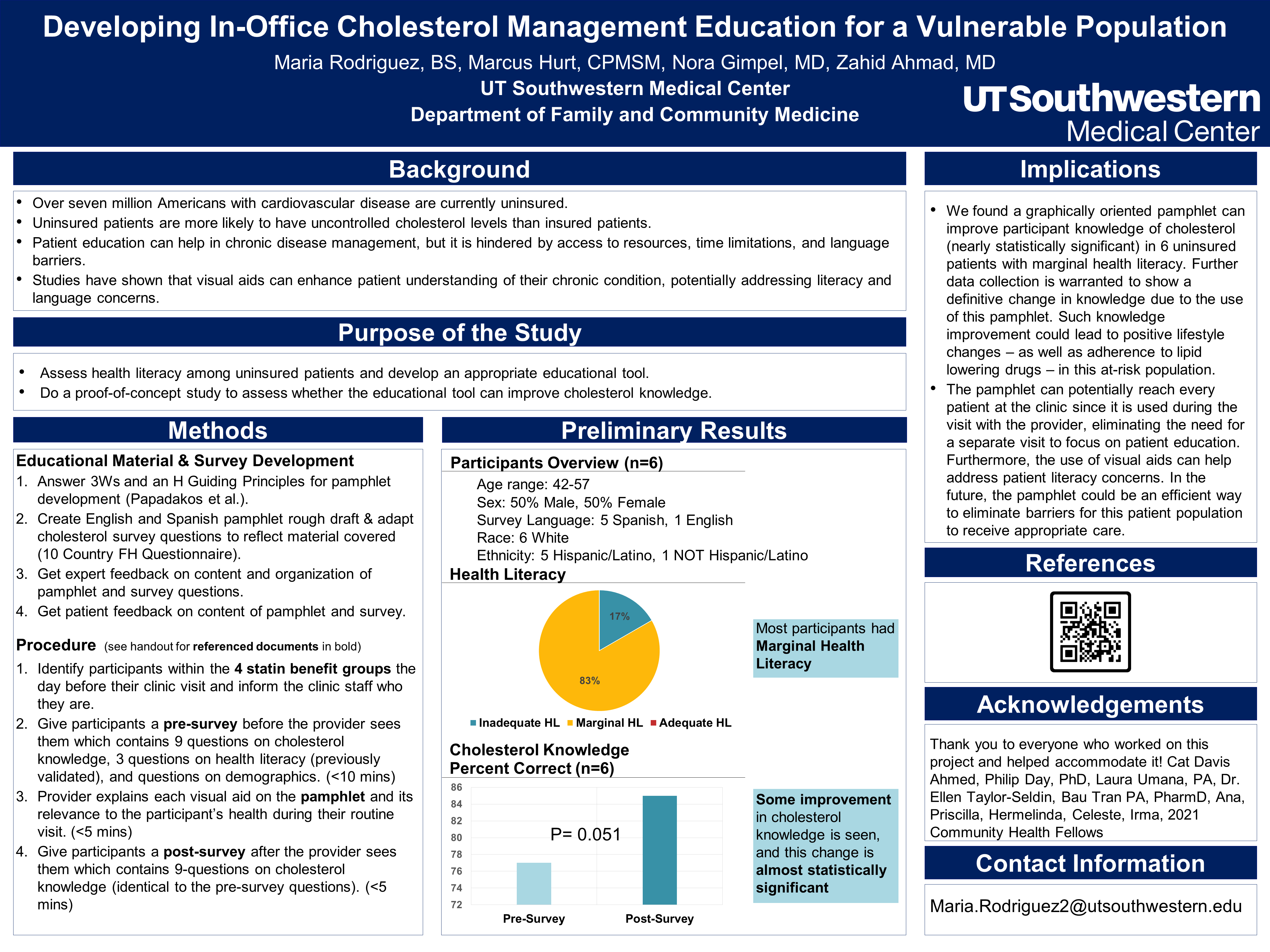SRFP028: Developing In-office Cholesterol Management Education for a Vulnerable Population
Maria Rodriguez; Nora Gimpel, MD; Marcus Hurt, CPMSM
Abstract
Objective: Develop and evaluate a visual, educational tool to help patients learn about the causes and management of high cholesterol.
Human Subjects Review: UTSW IRB pending approval
Design: Pre-post design intervention study.
Instrument: 9-question cholesterol knowledge pre-survey with minimal demographic information and a 3-question health literacy portion. Post-survey repeats the 9 cholesterol questions only.
Setting: Community clinic in north Texas that serves uninsured patients who are primarily Hispanic. Most patients at the clinic speak Spanish as their preferred language.
Anticipated Results: We anticipate the visual aid will improve patient knowledge about what they can do to control their cholesterol.
Conclusion: Patients in this community have low health literacy and depend on their providers to teach them how to care for their health. We developed an educational tool that is easy to integrate into an office visit and helps patients understand what they can do to manage their cholesterol. This tool can reach every patient at the clinic since it is used during the visit with the provider. Moving forward, we will continue to recruit patients and evaluate the educational tool. A limitation of this project is the language barrier between some providers using the tool and the patients, although we try to address it by using a pictorial tool.

Jack Westfall
jwestfall@aafp.org 11/21/2021Terrific project. Great poster and abstract. Thanks for sharing at NAPCRG